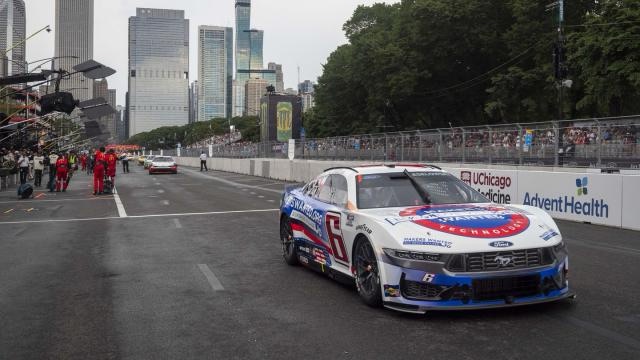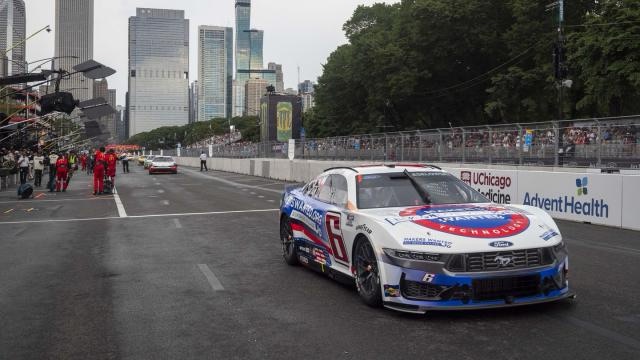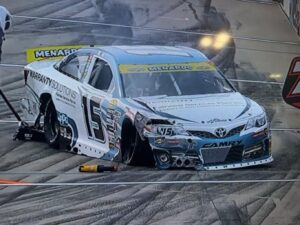The highly anticipated Chicago Street Race, which debuted on the NASCAR calendar in 2023, turned heads with its bold concept and dramatic execution. However, NASCAR President Steve Phelps recently confirmed that the event was not a financial success in its inaugural run. Despite the monetary loss, Phelps insists the race was a strategic victory for the sport, highlighting its broader significance in NASCAR’s efforts to grow its fan base and diversify its portfolio of events.

A Risky Move to the Streets of Chicago
The Chicago Street Race was one of the most ambitious events NASCAR has undertaken in its modern era. Held over the Fourth of July weekend, it marked the first time the Cup Series raced on a purpose-built street circuit. The layout showcased Chicago’s iconic landmarks and brought stock cars to a new urban audience.
However, the event faced significant challenges, including logistical hurdles, rain delays, and the early cancellation of support races. These complications, coupled with the high costs of constructing and operating the temporary circuit, contributed to the financial shortfall.
“The truth is, the Chicago race didn’t make money,” Phelps said during a recent media briefing. “But not every decision we make is about immediate financial returns. Sometimes, you have to think long-term.”
Why the Loss Was Worth It
Phelps emphasized that the Chicago Street Race served as a critical step in NASCAR’s broader mission to appeal to new fans and expand its reach into major urban markets.
“This wasn’t just about putting on a race,” Phelps explained. “It was about introducing NASCAR to an audience that might not have been exposed to our sport before. And in that sense, it was a huge success.”
The event drew a sellout crowd, many of whom were first-time NASCAR spectators. Television ratings were strong despite the weather delays, and social media engagement spiked as fans shared their excitement about the unique setting. The race also attracted a younger, more diverse demographic—a key goal for NASCAR as it seeks to modernize its image and grow its audience.
On-Track Drama Delivered
From a racing perspective, the event delivered unforgettable moments. Shane van Gisbergen, a Supercars champion from New Zealand, stunned the field by winning in his Cup Series debut, becoming the first driver to achieve such a feat in nearly 60 years. The wet-and-wild conditions added to the unpredictability, creating a race that fans and drivers alike will remember for years to come.
Van Gisbergen’s victory also underscored the event’s global appeal, as it showcased NASCAR’s willingness to embrace international talent and unconventional formats.
Learning From the First Year
Phelps acknowledged that there were lessons to be learned from the inaugural event, particularly around logistics and cost management. The high expense of setting up the temporary street circuit and accommodating the disruptions to downtown Chicago were among the biggest challenges.
“We knew going in that this was going to be a complicated event,” Phelps said. “But we’re already looking at ways to improve the experience for fans and make the event more efficient in the future.”
Despite the financial loss, NASCAR has already confirmed the Chicago Street Race will return in 2024 as part of the three-year deal with the city. Officials are optimistic that adjustments to the event will help reduce costs while preserving its unique appeal.

A Bold Vision for NASCAR’s Future
The Chicago Street Race is part of NASCAR’s broader strategy to push boundaries and reimagine its schedule. Recent years have seen the addition of new venues like the L.A. Coliseum, dirt racing at Bristol, and now, urban street circuits.
While traditionalists may question the departure from NASCAR’s roots on oval tracks, Phelps argues that innovation is necessary to keep the sport relevant in a rapidly changing entertainment landscape.
“We have to think about where NASCAR is going, not just where it’s been,” he said. “The Chicago Street Race is a perfect example of how we can honor our tradition while also trying new things that excite fans.”
A Long-Term Investment
Although the inaugural Chicago Street Race may have been a financial loss, its value lies in what it represents for NASCAR’s future. By venturing into new territories and taking calculated risks, the series is setting the stage for long-term growth.
For Phelps and his team, the message is clear: the Chicago Street Race wasn’t just about dollars and cents—it was about making a statement. And for NASCAR, that statement is worth the cost.
“Sometimes, you have to take a step back to take two steps forward,” Phelps concluded. “The Chicago Street Race is an investment in the future of our sport, and we’re confident it will pay off.”



































































































